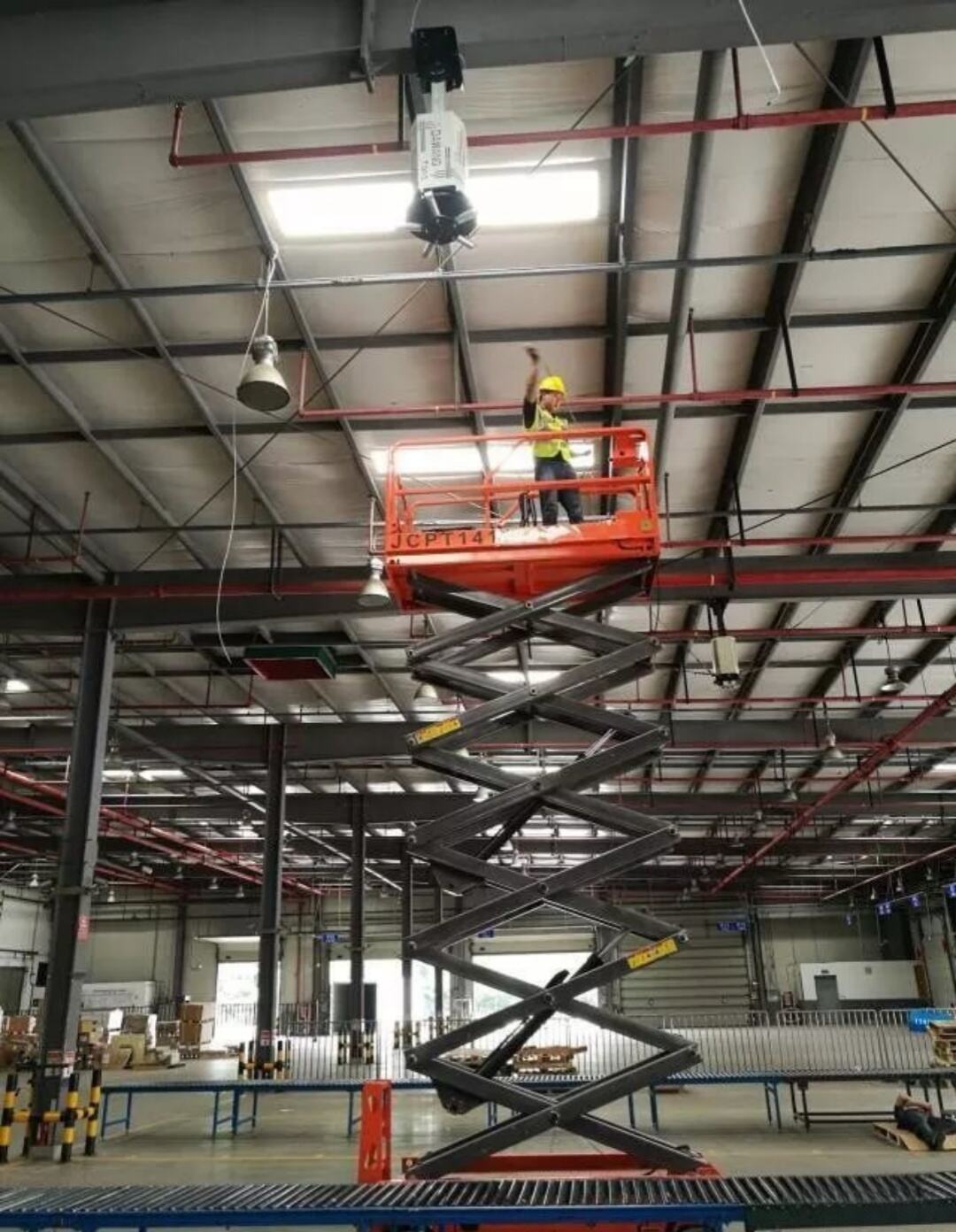Nov 18,2025
Analysis of Common Issues with High-Power Industrial Fans
First, we need to understand the concept of high-power industrial fans before diving into the problem analysis.
The high-power industrial fan is an energy-efficient workshop cooling device that consumes relatively little electricity. With a massive diameter of 7.3 meters, a single industrial fan can effectively cover an area of approximately 1,600 square meters, making it the preferred choice for large, high-ceilinged spaces.

Secondly, we also need to understand the scenarios where high-power industrial fans are used. These are typically large-scale venues with relatively high and spacious interiors, including various public spaces such as bus and train stations, docks, airports, sports stadiums, commercial streets, shopping malls, school auditoriums, gyms, leisure clubs, internet cafes, government service halls, and more—essentially any location with significant foot traffic.

Now that we’ve explored the concept and application scenarios of industrial fans, we can move on to addressing some common questions about high-power industrial fans—as well as discussing safety considerations.
01. Is it necessary to install high-power industrial fans in factory workshops? And how do they differ from air conditioners?
1. Currently, the nation and society are paying close attention to and placing great importance on the fundamental rights of industrial workers. Meanwhile, workers' expectations regarding their work environment are gradually increasing. As a result, employee turnover has become increasingly common, and recruiting new staff has turned into a persistent challenge. Scientific research shows that in hot and humid environments, workers tend to feel irritable more easily, which not only reduces their productivity but also increases the likelihood of mistakes at work. Therefore, enhancing workers' comfort during the scorching summer months is a critical issue that businesses—and their management teams—must seriously consider.

At this point, someone might ask: "Then why not install air conditioning instead of opting for a high-powered industrial fan?"
Well, we have to talk about some of the downsides of air conditioning in these settings. First, the airflow doesn’t replicate natural, all-around breezes—so prolonged exposure can easily lead to "air-conditioning illness." Second, air conditioners consume a significant amount of electricity, whereas high-powered industrial fans use far less energy compared to industrial air conditioning units. And finally, and most importantly, there’s the issue of safety: in environments with heavy foot traffic, the humid conditions created by air conditioning can dramatically increase the risk of electric shock.
Therefore, installing high-power industrial fans is a reliable and cost-effective solution that not only keeps the environment cooler but also eliminates workers' complaints about the conditions, ultimately boosting their productivity.
This is a win-win solution!

02. What are the installation requirements for high-power industrial fans? Is it safe to install high-power industrial fans at elevated heights?
1. The installation requirements for high-power industrial fans are quite versatile—as long as your building structure meets the following criteria: H-beams, I-beams, steel-concrete composite beams, spherical columns, and other similar structures; the total building height must exceed 4.5 meters; the fan blades must maintain a minimum safety distance of 0.2 meters from any obstacles; and the input power supply can accommodate either 380V or 220V.
2. Through meticulous on-site inspections and the implementation of multiple safety measures, we ensure the fan operates safely and reliably at high altitudes. Professional engineers are dispatched to assess installation conditions on-site and calculate the load-bearing capacity of the beams, confirming that the safety factor exceeds the specified standard before proceeding with installation. The entire machine structure and installation process incorporate several layers of safety protection, including:
①. Top beam with wire rope wrapping protection to prevent falling.
②. Four steel wire ropes provide balanced protection; a fall-prevention safety ring prevents shaft breakage and separation, thus avoiding falls.
③. Motor and flywheel anti-fall self-locking device ensures the reliable fastening of the wheel hub and output shaft together.
④. Integrated monolithic wheel hub capable of withstanding tensile forces exceeding 11 tons.
⑤. The mortise-and-tenon leaf stem connects to the hub, preventing the blade from curling upward, drooping downward, or swaying side to side.
⑥. Fan blade protection measures: A safety connecting chain securely fastens the fan blades layer by layer, holding them together as a single unit to prevent them from falling off.
⑦. Automatically triggers an alarm and halts operation to prevent accidental injuries.
03. What Are the Advantages of High-Power Industrial Fans?
1. Blade Material: A high-grade, 5052 aluminum alloy plate with a thickness of 1.5 mm—used in the aerospace industry—for its superior density and strength. This aviation-specific aluminum sheet offers enhanced strength and flexibility, ensuring a bright, durable finish.
2. Blade shape cross-section: Streamlined, variable-profile design that adheres to the equal-chord-length theory of aerodynamics, ensuring more uniform airflow, greater overall air volume, and eliminating any mid-section gaps.
3. Petiole-leaf connection: Testing by a professional institution confirms that the entire leaf can withstand tensile forces exceeding 1.7 tons, making the leaf’s attachment the leaf’s sole safety feature.
4. Vibration-damping rubber pads for isolation: Vibration-isolating rubber pads are fitted between the hub mounting holes and specially shaped inserts, enabling a non-rigid connection between the blade stem and the chassis hub.
5. Core Patent: The connecting components of the DaWang high-power industrial fan all feature a mortise-and-tenon design. Notably, this includes the connection between the internal cone and the motor, the junction of the wheel disc with the blade stem, and the attachment of the blade stem to the cushioning mechanism—effectively ensuring the overall safety of the fan.
Once we’ve gained some basic knowledge about large industrial fans, we’ll understand the importance of installing them in those tall, stuffy spaces—and learn how to choose an industrial fan that excels in all key performance areas. This approach not only helps reduce costs but also ensures maximum safety.